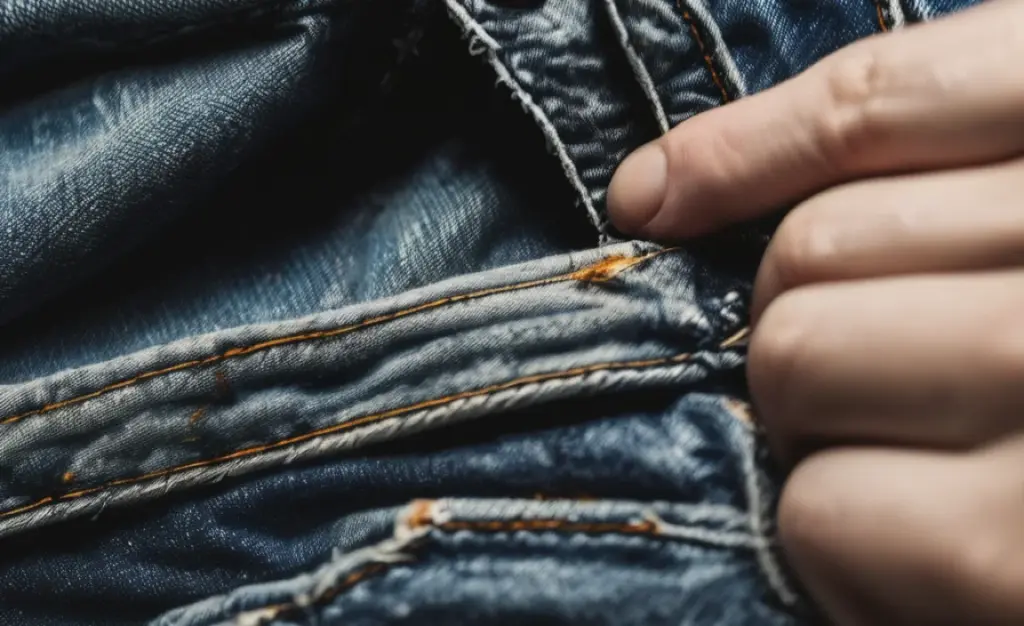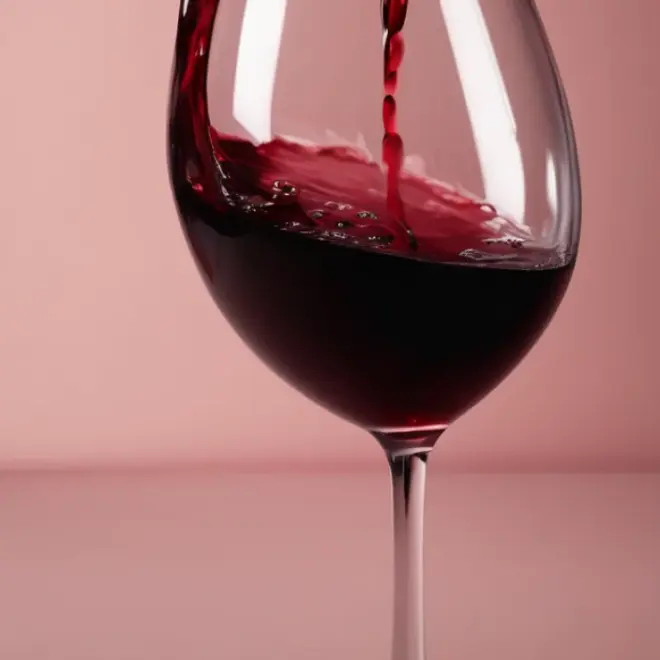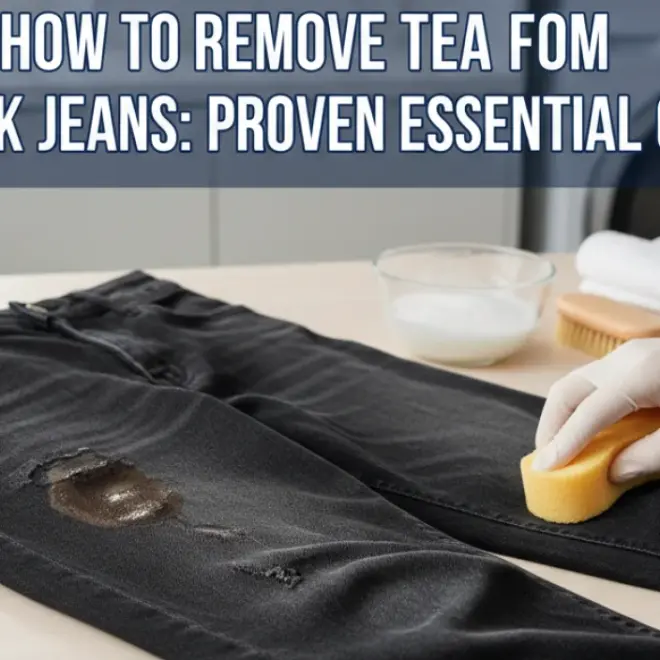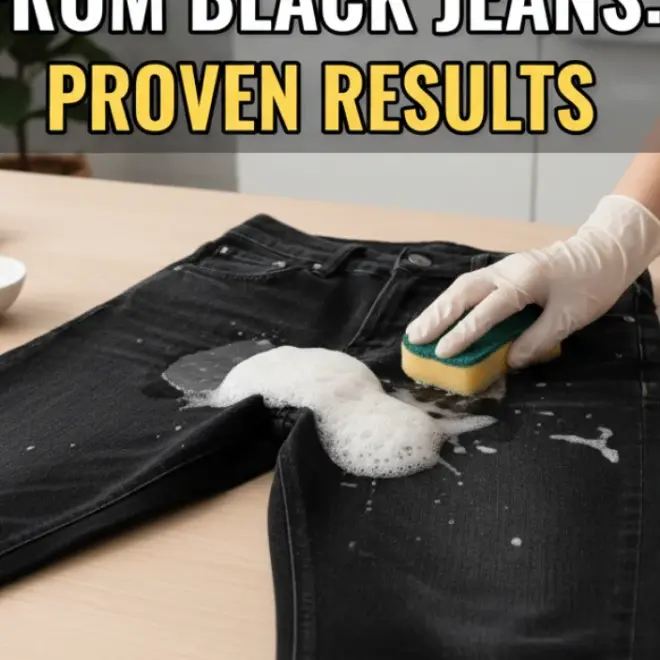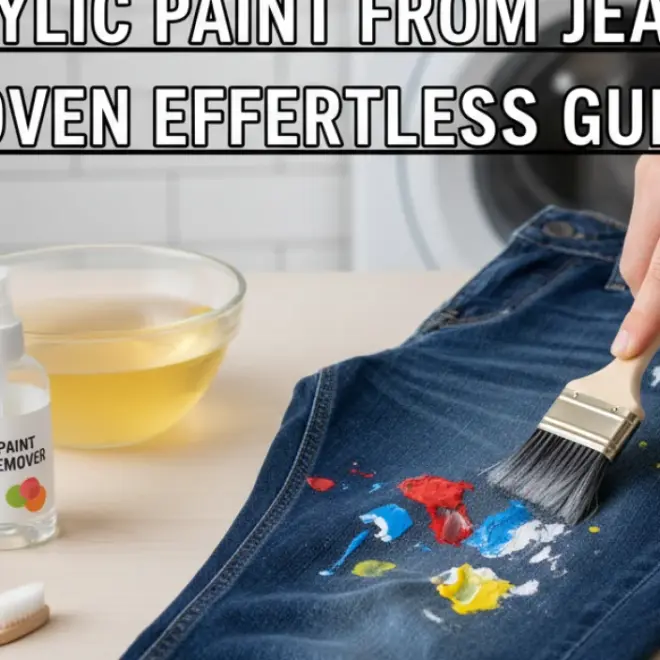To remove acrylic paint from dark wash jeans, act quickly. The best method involves soaking in warm water, gently scraping, and applying rubbing alcohol or an alcohol-based hand sanitizer directly to the stain. For stubborn spots, a mixture of dish soap and baking soda can be effective. Always test on an inconspicuous area first and wash as usual afterward.
Dark wash jeans are a wardrobe staple, but a stray drip of acrylic paint can feel like a disaster. Don’t worry! It’s a common problem, and with the right approach, you can often rescue your favorite denim. This guide will walk you through a proven method to tackle those accidental paint splatters, leaving your jeans looking good as new. We’ll cover everything from early intervention to tackling tougher, dried-on messes. Get ready to restore your jeans with simple, effective steps.
Understanding Acrylic Paint and Denim
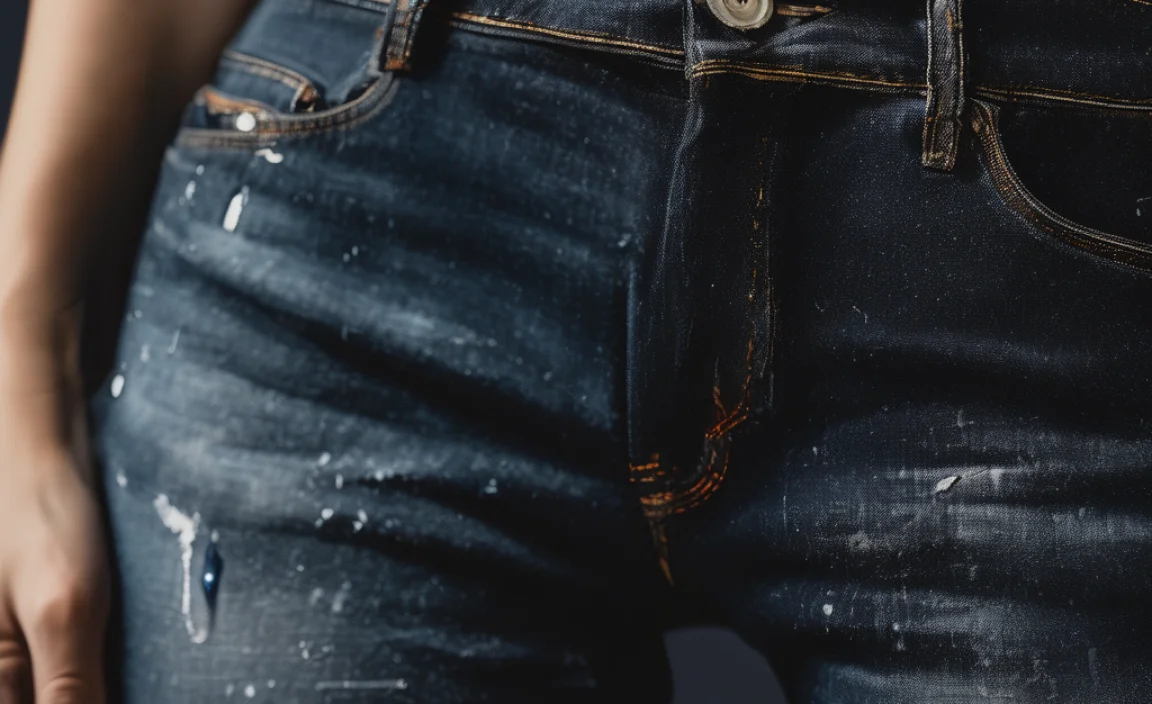
Acrylic paint is a water-based paint that becomes water-resistant once it dries. This is great for art projects but tricky for stain removal. Because it’s plastic-based, once it cures, it adheres to fabric fibers. Dark wash jeans are typically dyed with strong pigments, and while they can be resilient, harsh chemicals or vigorous scrubbing can sometimes affect the dye. The goal is to lift the paint without damaging the denim’s color or texture.
The Best Time to Act: Wet Paint is Your Friend
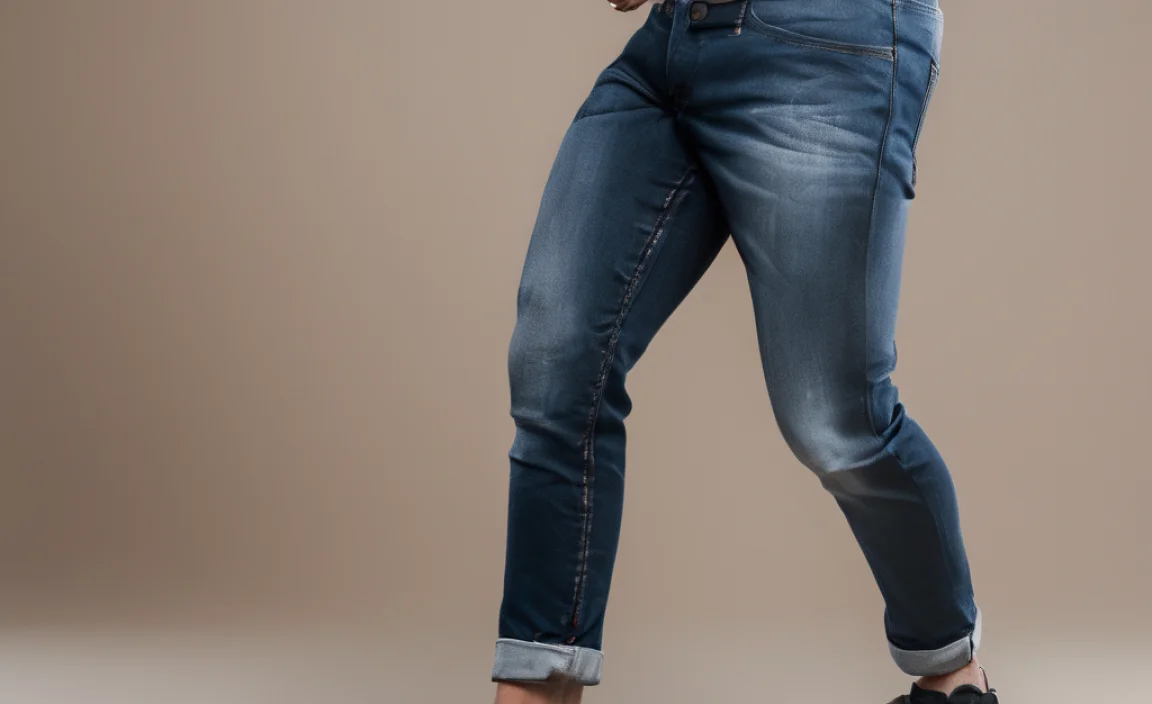
The absolute easiest way to deal with acrylic paint on your jeans is when it’s still wet. If you’ve just noticed a fresh spill, stop reading and grab some paper towels or a clean cloth. Immediately blot the wet paint. Don’t rub, as this will push the paint deeper into the fabric fibers. The more paint you can lift while it’s wet, the less work you’ll have to do later.
Gather Your Supplies
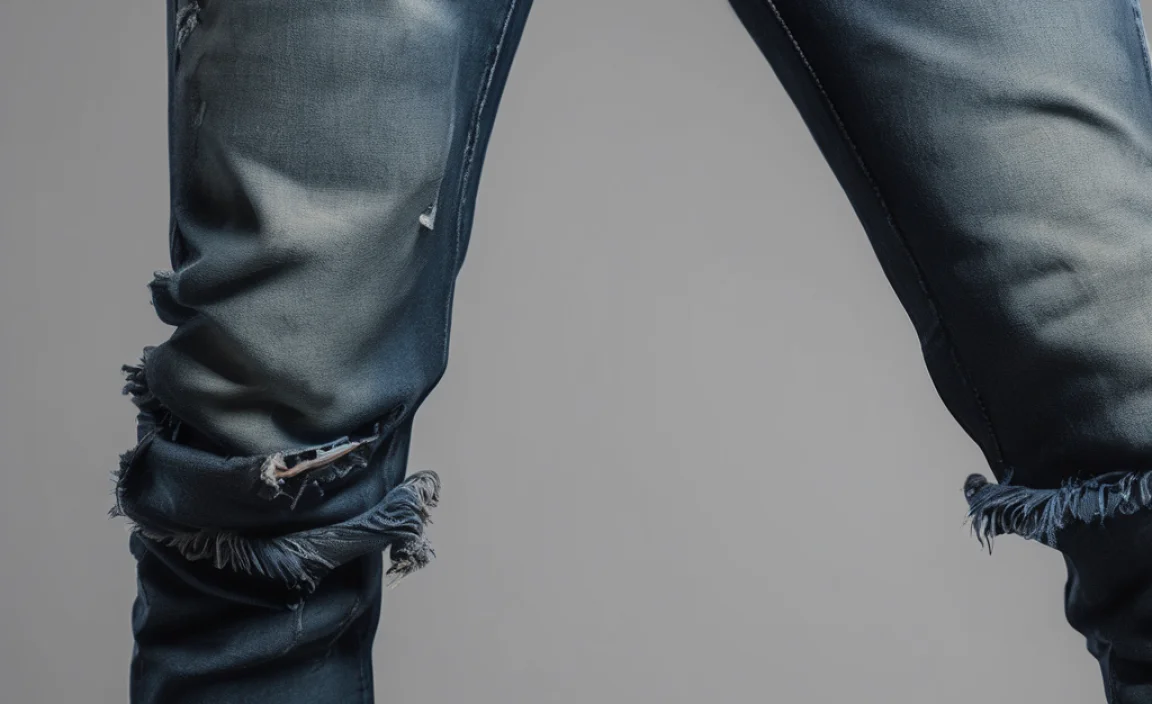
Before we begin, let’s make sure you have everything you need. Having these items handy will ensure a smooth and effective removal process. Your success often depends on being prepared!
- Warm water
- Clean cloths or paper towels
- Rubbing alcohol (isopropyl alcohol, 70% or higher concentration is best)
- Cornstarch or talcum powder (optional, for absorbing)
- Mild dish soap
- Baking soda
- An old toothbrush or soft-bristled brush
- A dull knife, spoon, or credit card (for scraping)
- Cold water
- Your regular laundry detergent
Proven Method: Step-by-Step Guide

This method is designed to be effective yet gentle on your dark wash jeans. Remember to be patient, especially with dried paint.
Step 1: Address Fresh Spills ASAP
If the paint is still wet, this is your golden opportunity. Lay the affected area of the jeans flat. Use a dry cloth or paper towel to gently blot up as much of the wet paint as possible. Work from the outside of the spill inwards to prevent spreading. Avoid rubbing.
Step 2: Rinse with Warm Water
Turn the jeans inside out so the back of the stained area is facing up. Run cold water through the fabric from the backside of the stain. This helps push the paint out of the fibers rather than further in. You can also try soaking the affected area in a basin of warm water for about 15-30 minutes. Some of the wet paint might loosen and come off.
Step 3: Scrape Away Dried Paint (If Applicable)
If the paint has already dried, you’ll need to carefully remove as much of the surface layer as possible. Use a dull knife, the edge of a spoon, or a credit card to gently scrape at the dried paint. Be careful not to snag or tear the denim fibers. The goal here is to break up the paint’s surface and lift off larger flakes. This is a crucial step for dried-on paint, as it reduces the amount of paint that needs to be dissolved.
Step 4: Apply Rubbing Alcohol
This is often the most effective step for acrylic paint. Dampen a clean cloth or cotton ball with rubbing alcohol. For larger or tougher stains, you can pour rubbing alcohol directly onto the stained area. Gently blot and dab the paint stain with the alcohol-soaked cloth. You should start to see the paint transferring from the jeans to your cloth. Keep using fresh parts of the cloth or new cotton balls as the paint lifts.
An even more efficient method for this step, especially on stubborn spots, is to use an alcohol-based hand sanitizer. Apply a generous amount directly to the paint spot. Let it sit for a few minutes to soften the acrylic. Then, use your dull scraper or an old toothbrush to gently work at the softened paint. This works because the active ingredient in most hand sanitizers is alcohol and it contains emollients that help break down the paint without being too harsh on the fabric.
For really tough spots, you can try soaking the stained area in a small amount of rubbing alcohol for about 30 minutes. Place a paper towel underneath the stain to absorb excess liquid and paint as it is released.
Step 5: Loosen Stubborn Paint with Dish Soap and Baking Soda
If the rubbing alcohol didn’t get everything, try this paste. Mix a small amount of mild dish soap with baking soda to create a thick paste. Apply this paste directly to any remaining paint stains. Gently work it into the fabric using an old toothbrush or your fingers. Let the paste sit on the stain for at least 15-30 minutes, or even longer for very stubborn marks.
The baking soda acts as a mild abrasive, while the dish soap helps to break down the paint’s binder. After it has sat, use the toothbrush to gently scrub the area. Rinse thoroughly with cold water.
Step 6: Pre-treat and Wash
Once you’ve worked on the stain with your chosen method(s), it’s time to prepare for washing. Rinse the treated area very well with cold water to remove all traces of the cleaning agents. Apply a small amount of liquid laundry detergent directly to the treated spot and gently rub it in. Let it sit for another 10-15 minutes as a final pre-treatment.
Now, wash your jeans in the washing machine on a cold water cycle with your regular detergent. Do not use hot water, as this can set any remaining stain if it wasn’t fully removed.
Step 7: Check Before Drying
This is a critical step! After the wash cycle is complete, check the stained area carefully. If you can still see any remnants of the paint, do NOT put the jeans in the dryer. The heat from the dryer will permanently set the stain, making it much harder, if not impossible, to remove.
If the stain is still visible, repeat the relevant steps (rubbing alcohol, dish soap/baking soda paste) and wash again. You might need to try a combination of methods or repeat the process a few times for very old or large paint splatters.
Step 8: Air Dry
Once you are satisfied that the paint stain is completely gone, you can air dry your jeans. This is the safest option. Hang them up or lay them flat until dry. Once fully dry and you’ve confirmed the stain is gone, you can then tumble dry them if you prefer, or continue to air dry.
Dealing with Dried Acrylic Paint
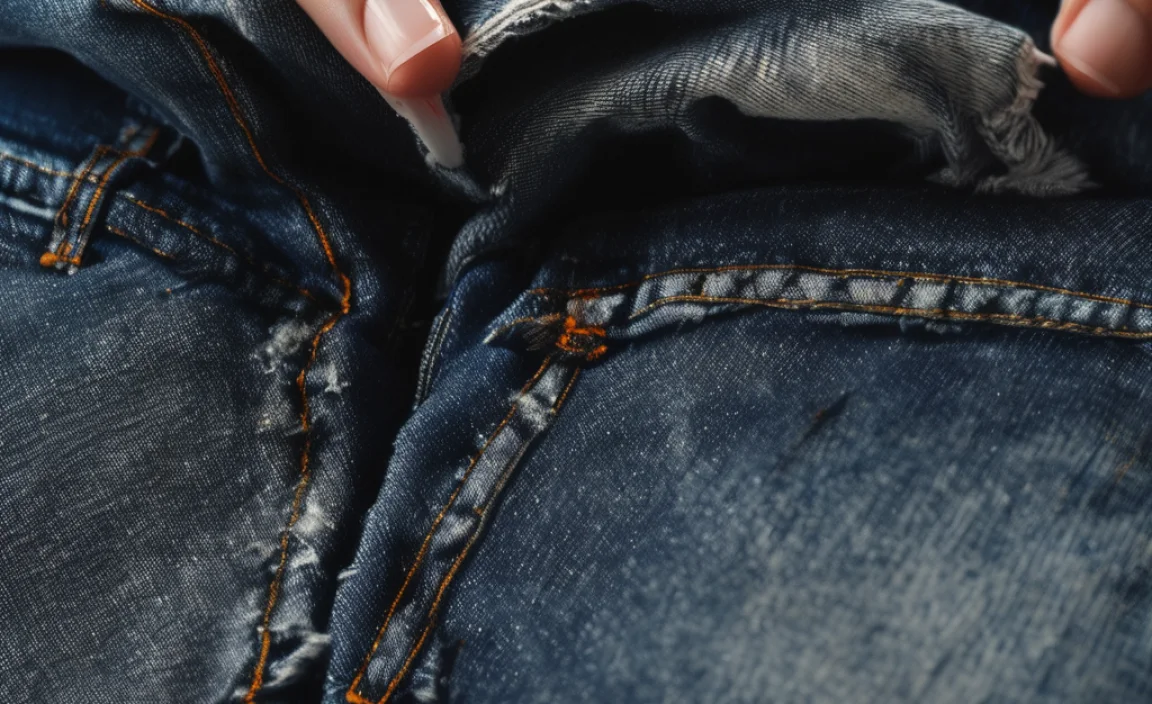
Dried acrylic paint is significantly more challenging than fresh paint. The key is patience and persistence. The steps outlined above, especially starting with gentle scraping to remove surface paint, followed by rubbing alcohol or the dish soap/baking soda paste, are essential. For very old, stubborn stains, you might need to try multiple applications and allow longer soaking times. Remember that some very deep or old stains might be impossible to remove completely without affecting the denim’s color. The goal is to make it as unnoticeable as possible.
Alternative Methods and Considerations
While the rubbing alcohol and dish soap/baking soda method is generally highly effective and safe for dark wash jeans, a few other options exist for more stubborn situations. Always test any new product or method on an inside seam or a hidden area of the jeans first to ensure it doesn’t damage the fabric or color.
Acetone (Nail Polish Remover)
Acetone can be effective at breaking down acrylic paint. However, it’s a harsh solvent and can also remove dye from your jeans, especially dark washes. If you choose to try acetone, use it sparingly. Apply a small amount to a cotton swab and dab it only on the paint itself, trying to avoid the surrounding denim as much as possible. Work in a well-ventilated area and rinse thoroughly immediately after. This is a last resort and carries a higher risk of discoloring your jeans.
Commercial Paint Removers
There are products specifically designed for removing paint from fabric. Look for ones that are safe for use on clothing. Follow the product instructions carefully and test in an inconspicuous area first. Some of these may be more potent and could also affect your denim’s dye.
The Importance of Testing
Dark wash denim gets its color from dyes. Solvents and even some cleaning agents can potentially lift or fade these dyes. Before applying any cleaning solution to a visible stain, test it on an inside seam or a small, hidden patch of fabric. Apply the solution, let it sit for a few minutes, then blot and rinse. Check the test area for any color change before proceeding with the stain removal.
When to Call a Professional
If your jeans are expensive, made of delicate material, or if the paint stain is very large and dried, you might consider taking them to a professional dry cleaner. They have access to specialized solvents and techniques that can often remove difficult stains without damaging the fabric. Be sure to point out the stain and explain what it is.
Table: Comparing Removal Agents
Here’s a quick comparison of common agents for removing acrylic paint from fabric, considering effectiveness and potential risks to dark denim.
| Removal Agent | Effectiveness | Risk to Dark Wash Jeans | Notes |
|---|---|---|---|
| Rubbing Alcohol | High | Low to Moderate (can fade very dark indigo with prolonged contact) | Best for most acrylic paint stains. Evaporates quickly. |
| Alcohol-Based Hand Sanitizer | High | Low to Moderate (similar to rubbing alcohol) | Convenient, readily available. |
| Mild Dish Soap & Baking Soda Paste | Moderate | Low | Gentle abrasive, helps break down paint. |
| Acetone (Nail Polish Remover) | Very High | High (can strip dye and damage fabric) | Use as a last resort and with extreme caution. Test thoroughly. |
| Commercial Paint Removers | Varies (check product labels) | Low to High (depending on formulation) | Always follow product instructions and test first. |
FAQs About Removing Acrylic Paint from Jeans
If I can’t find rubbing alcohol, what else can I use?
Don’t worry! Alcohol-based hand sanitizer is an excellent substitute because it contains a high percentage of alcohol. Hairspray, if it contains alcohol as a significant ingredient, can also sometimes work in a pinch, but test it first as other ingredients might leave residue.
Can I use hot water to remove acrylic paint?
No, it’s best to avoid hot water, especially for dried paint. Hot water can set the paint stain permanently into the fabric fibers, making it much harder to remove. Stick to cold or warm water for rinsing and washing.
How long does the paint removal process usually take?
The time can vary a lot. For fresh paint, it might take just a few minutes. For dried paint, it could take anywhere from 30 minutes to several hours, spread across multiple attempts and wash cycles. Patience is key!
Will this method work on other types of paint?
This method is specifically tailored for acrylic paint. Other types of paint (like oil-based paints or latex house paint) may require different removal agents and techniques. Always identify the type of paint for the best results.
Can I damage my dark wash jeans trying to remove the paint?
There’s a small risk. Harsh scrubbing or strong solvents like acetone can fade the dye or damage the fabric. Always be gentle, test in an inconspicuous area first, and follow the layered approach of milder methods before resorting to stronger ones. The method described here aims to minimize risk.
What if the stain is on a very old, treasured pair of jeans?
For valuable or sentimental items, consider professional cleaning first. If you decide to tackle it yourself, proceed with extreme caution. Start with the gentlest methods (blotting wet paint, cold water rinse) and a diluted version of any cleaning agent. Document each step you take.
Conclusion
Accidents happen, but a blob of acrylic paint on your favorite dark wash jeans doesn’t have to be a permanent fashion faux pas. By acting quickly if the paint is wet, gathering the right supplies, and following a patient, step-by-step approach with tools like rubbing alcohol and a simple baking soda paste, you can significantly increase your chances of a successful stain removal. Remember to always test on a hidden area first, be gentle with the fabric, and avoid the dryer until you’re absolutely sure the stain is gone. With a little effort and the right technique, your dark wash jeans can make a full recovery, ready for you to wear with confidence again.


